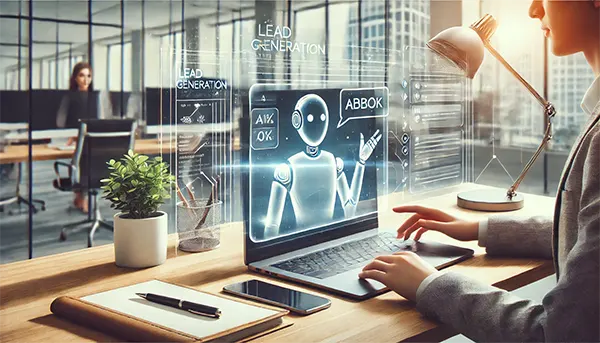
Strategies for Optimizing Lead Generation with Chatbots in 2025
In the evolving digital landscape, businesses are increasingly turning to automation to enhance their marketing strategies. Chatbots have emerged as one of the most efficient tools for optimizing lead generation processes. As of 2025, their role is becoming even more critical in personalizing customer interactions, improving engagement, and driving higher conversion rates. The ability of chatbots to handle real-time interactions and provide personalized recommendations makes them an indispensable part of modern marketing strategies.
How Chatbots Are Revolutionizing Lead Generation in 2025
Chatbots are not just tools for automating customer service; they are powerful assets for lead generation. In 2025, advancements in artificial intelligence (AI) and machine learning have made chatbots more intuitive and capable of understanding complex queries. This level of sophistication enables businesses to engage visitors more effectively and guide them through the sales funnel with personalized experiences. By automating initial customer interactions, chatbots free up human agents to focus on high-priority leads while maintaining a seamless experience for potential customers.
The core value of chatbots lies in their ability to handle large volumes of interactions simultaneously. This makes them highly effective in lead generation, especially in industries where customer inquiries are frequent and varied. AI algorithms can evaluate potential leads’ behavior, segment them based on their needs, and offer real-time recommendations or solutions. This not only streamlines the lead qualification process but also shortens the sales cycle by providing instant responses to inquiries.
Enhanced Personalization through AI Integration
AI-driven chatbots are now able to analyze customer data, behavior, and preferences, tailoring responses and recommendations based on individual needs. This personalized approach helps businesses engage potential leads on a deeper level. By analyzing patterns and leveraging real-time data, chatbots can predict what customers are likely to need and provide tailored offers or content that resonates with them, significantly improving the chances of conversion. For instance, if a chatbot detects that a user is interested in a particular product category, it can suggest relevant items or offer a personalized discount, thereby increasing the likelihood of a successful lead conversion.
Furthermore, chatbots have become adept at learning from past interactions. This means that as the chatbot continues to interact with potential leads, it gains valuable insights into their preferences and behavior. These insights allow businesses to refine their marketing strategies and create even more personalized experiences for each lead. This continuous learning process ensures that chatbots remain effective over time, adapting to the changing needs of customers and the market.
Key Strategies for Implementing Chatbots in Lead Generation
For businesses looking to optimize lead generation with chatbots in 2025, there are several strategies that can be employed. The first step is to integrate chatbots into your website and social media platforms where they can engage with visitors as soon as they arrive. By providing instant responses, chatbots ensure that potential leads don’t leave due to frustration with slow response times. Furthermore, chatbots can collect valuable customer information such as preferences, contact details, and queries, which can be used to nurture leads in future interactions.
Chatbots can also be utilized in email marketing campaigns to follow up with leads who have shown interest in a product or service. By embedding chatbot links in emails, businesses can encourage leads to continue their journey with an interactive, personalized experience. For example, a chatbot can greet users who click through from an email and offer additional information, answer questions, or schedule a meeting with a sales representative, all while collecting valuable data to improve lead quality.
Building a Seamless User Experience
One of the key factors in ensuring the success of chatbot-driven lead generation is creating a seamless user experience. Chatbots should be easy to interact with and provide clear, actionable responses. A complex or frustrating chatbot experience can turn potential leads away. To optimize the user experience, businesses should regularly update and test their chatbot scripts to ensure they remain relevant, engaging, and effective. Additionally, integrating chatbots with CRM systems allows businesses to track leads and personalize follow-ups based on collected data.
Moreover, chatbots should be integrated into various communication channels, such as live chat, email, and social media. This multi-channel approach ensures that businesses can engage leads wherever they are. A chatbot that seamlessly transitions between platforms allows businesses to maintain continuous communication with leads, ensuring that no opportunities are lost due to missed interactions. This holistic approach to lead generation is critical for businesses looking to build stronger relationships with their customers and enhance the overall customer journey.

The Future of Chatbots in Lead Generation
Looking ahead, chatbots are expected to become even more advanced, with better integration into various communication channels such as voice assistants and messaging platforms. As AI technology continues to evolve, chatbots will be able to perform more complex tasks, such as handling customer objections, providing detailed product explanations, and even guiding customers through purchase processes in real-time. In 2025 and beyond, chatbots will remain a cornerstone of lead generation strategies, offering businesses an automated yet personalized approach to nurturing and converting leads.
As businesses continue to rely on chatbots for lead generation, it is important to monitor their performance and make adjustments as needed. Analyzing chatbot interactions will provide valuable insights into customer preferences, pain points, and purchasing behaviors, which can be used to fine-tune marketing strategies and improve lead conversion rates. In the future, chatbots will not only help businesses generate leads but also play a crucial role in building long-term customer relationships by continuously engaging and supporting customers throughout their journey.
Leveraging Data for Continuous Improvement
The key to maintaining a successful chatbot strategy is leveraging the data gathered from user interactions. By analyzing this data, businesses can refine their chatbot algorithms to ensure they continue to meet customer needs and improve lead conversion rates. Over time, the chatbot will learn to offer even more personalized suggestions, improving the overall effectiveness of lead generation efforts. With a strong data-driven approach, businesses can ensure that their chatbots remain an invaluable asset in the ever-evolving landscape of digital marketing.
